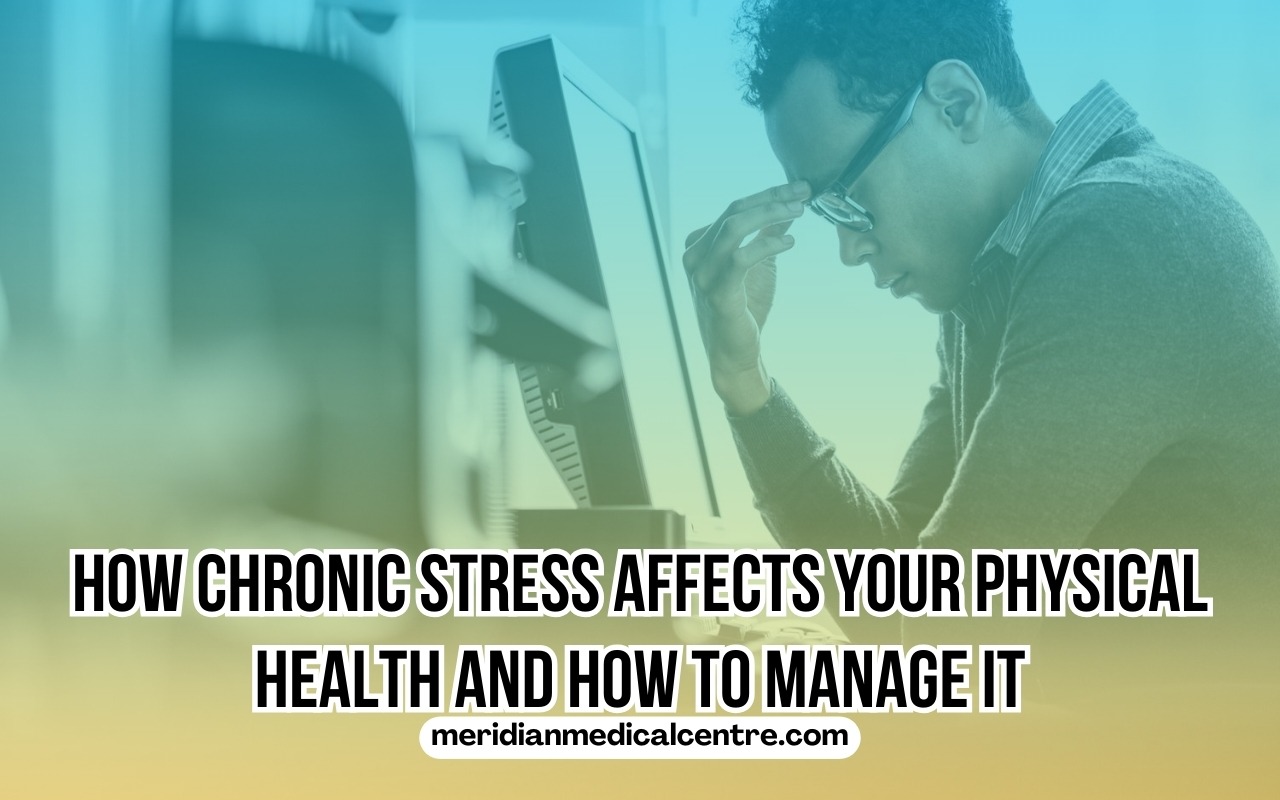
In today's fast-paced world, chronic stress has become a prevalent issue that many individuals grapple with on a daily basis. While stress is a natural response of the body to challenges and threats, chronic stress can lead to significant physical health problems. Understanding the intricate relationship between chronic stress and physical health, as well as effective management strategies, is essential for maintaining well-being and improving quality of life.
Chronic stress is the result of ongoing, unrelenting pressures that can be both external and internal. Common sources of chronic stress include financial difficulties, relationship problems, job-related pressures, and health concerns. The implications of enduring stress can be profound, affecting not only mental health but also leading to a myriad of physical health issues.
When the body perceives a threat, it activates the stress response system, triggering the release of hormones such as cortisol and adrenaline. While these hormones can be beneficial in short bursts—preparing the body to respond to emergencies—they can wreak havoc on health when present in excess over extended periods. Chronic activation of the stress response leads to an array of physiological changes that can compromise various bodily systems, increasing the risk of severe health conditions.
The Physiological Impact of Chronic Stress
Chronic stress can exacerbate conditions like high blood pressure and heart disease. The sustained release of stress hormones causes the heart to work harder, leading to elevated heart rates and increased blood pressure. Over time, this excessive strain can result in hypertension, which is a significant risk factor for cardiovascular diseases. Studies have shown that individuals experiencing chronic stress are at a heightened risk for heart attacks and strokes due to these physiological changes.
Moreover, chronic stress is linked to metabolic disorders. The release of cortisol, a primary stress hormone, can lead to changes in appetite and weight gain, particularly in the abdominal area. This increase in visceral fat is especially concerning as it is associated with a higher risk of developing diabetes and other metabolic syndromes. In fact, individuals under persistent stress often find themselves caught in a cycle where stress leads to unhealthy eating habits, which exacerbates health problems.
The digestive system is not immune to the effects of chronic stress either. Stress can disrupt gut motility, resulting in gastrointestinal issues such as irritable bowel syndrome (IBS), heartburn, nausea, and constipation. These symptoms can significantly impact daily life and overall well-being, making it difficult for individuals to engage in social activities or maintain a healthy lifestyle.
Furthermore, the immune system is remarkably affected by chronic stress. Prolonged exposure to stress hormones can suppress immune function, making the body more susceptible to infections and illnesses. Individuals experiencing chronic stress may find themselves getting sick more frequently, as their bodies are less equipped to fight off pathogens. This weakened immunity not only increases vulnerability to common infections but may also slow down recovery times from illnesses.
Chronic stress can also trigger psychological issues, including anxiety and depression. Both conditions often coexist with stress, creating a feedback loop where psychological distress exacerbates physical symptoms and vice versa. The mental and emotional toll of chronic stress cannot be overstated, as it can lead to a decrease in motivation, focus, and overall happiness. Recognizing early signs of stress can help in intervening before they escalate into more serious mental health disorders.
Recognizing the Signs of Chronic Stress
Understanding the signs of chronic stress is crucial for effective management. It often manifests in a variety of physical and emotional symptoms. Individuals may experience persistent headaches, fatigue, muscle tension, and sleep disturbances. Emotionally, chronic stress can lead to feelings of irritability, restlessness, and sadness. Behavioral changes might also occur, such as withdrawing from social interactions, changes in appetite, and increased reliance on substances like alcohol or nicotine.
Another overlooked symptom of chronic stress is cognitive impairment. This includes difficulties with memory, attention, and decision-making. The cognitive load of managing constant stress can deplete mental resources, leading to “brain fog” and reduced productivity. Recognizing these symptoms is the first step towards addressing chronic stress and its impact on physical health.
The Importance of Managing Chronic Stress
Effective stress management techniques are vital for mitigating the adverse effects of chronic stress on physical health. By implementing a comprehensive approach to stress management, individuals can regain control over their well-being and improve their overall health outcomes.
One fundamental aspect of managing stress is adopting a balanced lifestyle. Regular physical activity has been shown to reduce stress levels significantly. Exercise promotes the release of endorphins—natural mood lifters—as well as helping to regulate stress hormones. Engaging in activities such as walking, jogging, yoga, or even dancing can provide an effective outlet for stress and contribute to better physical health.
Equally important is maintaining a nutritious diet. Consuming a well-balanced diet rich in fruits, vegetables, whole grains, and lean proteins can bolster the body’s resilience against stress. Foods rich in omega-3 fatty acids, antioxidants, and vitamins play a crucial role in maintaining mental health and well-being. Additionally, staying hydrated and moderating caffeine and alcohol intake can further support physical health during stressful times.
Mindfulness and relaxation techniques can also play a critical role in managing stress. Practices such as meditation, deep breathing exercises, and progressive muscle relaxation have been shown to calm the nervous system and decrease cortisol levels. Taking time to engage in these practices regularly can improve resilience to stress and promote a sense of peace and well-being.
Establishing a strong social support system is another essential component of stress management. Connecting with friends, family, or support groups can provide emotional relief and practical advice. Sharing experiences and feelings with others who understand can significantly lessen the burden of chronic stress.
In many instances, professional help may be required to address chronic stress effectively. Seeking counseling or therapy can provide individuals with tools and strategies to cope with stressors in a healthy way. Mental health professionals can assist in identifying triggers, developing coping strategies, and addressing underlying issues contributing to stress.
Creating a Personalized Stress Management Plan
The path to managing chronic stress is not one-size-fits-all; it requires a personalized approach. Here are several strategies that can be tailored to individual needs:
- Identify Stress Triggers: Keeping a journal to track stressors and reactions can help individuals pinpoint specific triggers and patterns. This insight allows for proactive measures to be implemented to avoid or mitigate stressors.
- Set Realistic Goals: Break tasks into manageable parts and set achievable goals. This helps avoid feelings of being overwhelmed and promotes a sense of accomplishment as tasks are completed.
- Prioritize Self-Care: Engage in activities that promote relaxation and joy, such as hobbies, reading, or spending time in nature. Setting aside regular time for oneself is vital for maintaining mental and physical health.
- Practice Time Management: Developing effective time management skills can reduce stress related to deadlines and overwhelming workloads. Planning and organizing tasks can enhance productivity and reduce anxiety.
- Seek Professional Support When Needed: If stress becomes overwhelming, it is crucial to seek professional help. Therapists and counselors can provide guidance and strategies tailored to individual circumstances.
- Incorporate Relaxation Techniques: Regularly practicing mindfulness, yoga, or deep breathing can help reduce stress levels and enhance overall well-being.
Conclusion
Chronic stress is a pervasive issue that can have profound effects on physical health if left unaddressed. Understanding the connection between chronic stress and health is crucial for fostering resilience and making informed lifestyle choices. By recognizing the signs of stress and implementing effective management strategies, individuals can reduce their risk of stress-related health problems and improve their overall quality of life.
In the journey toward managing chronic stress, it is important to remember that change is possible. By taking proactive steps, seeking support, and embracing a healthier lifestyle, individuals can reclaim their well-being and experience the richness of life that comes with reduced stress. Each small step taken toward managing stress contributes to long-term health benefits and an enhanced sense of fulfillment.
For further information on managing stress and its effects on health, resources such as the Mayo Clinic can provide comprehensive insights and strategies. Similarly, explore the American Psychological Association for research-based resources on coping with stress and understanding its impact on health.








